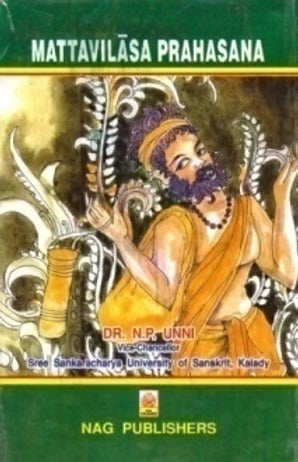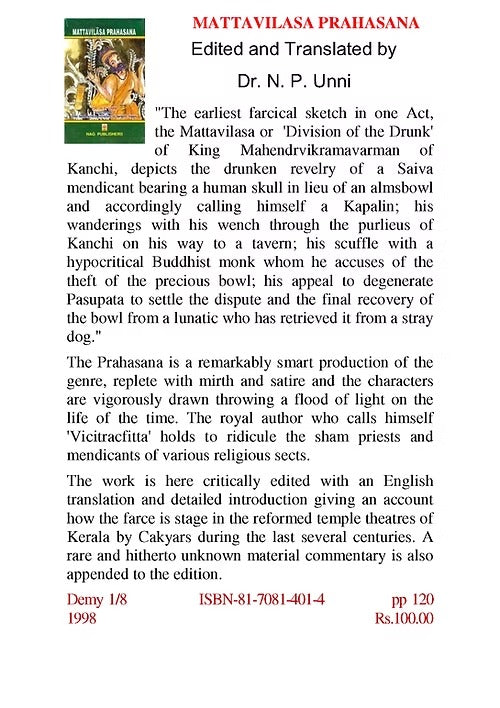MATTAVILASA PRAHASANA
MATTAVILASA PRAHASANA is backordered and will ship as soon as it is back in stock.
Couldn't load pickup availability
Genuine Products Guarantee
Genuine Products Guarantee
We guarantee 100% genuine products, and if proven otherwise, we will compensate you with 10 times the product's cost.
Delivery and Shipping
Delivery and Shipping
Products are generally ready for dispatch within 1 day and typically reach you in 3 to 5 days.
Book Details
• Title: Mattavilasa Prahasana (Text, English Trans. With Introduction)
• Author: Dr. N.P. Unni
• ISBN: 8170814011
• Edition: 1998
• Size: Demy 1/8
• Pages: 120
• Publisher: Nag Prakashan
Edited and Translated by Dr. N. P. Unni
"The earliest farcical sketch in one Act, the Mattavilasa or 'Division of the Drunk' of King Mahendrvikramavarman of Kanchi, depicts the drunken revelry of a Saiva mendicant bearing a human skull in lieu of an almsbowl and accordingly calling himself a Kapalin; his wanderings with his wench through the purlieus of Kanchi on his way to a tavern; his scuffle with a hypocritical Buddhist monk whom he accuses of the theft of the precious bowl; his appeal to degenerate Pasupata to settle the dispute and the final recovery of the bowl from a lunatic who has retrieved it from a stray dog."
The Prahasana is a remarkably smart production of the genre, replete with mirth and satire and the characters are vigorously drawn throwing a flood of light on the life of the time. The royal author who calls himself 'Vicitracfitta' holds to ridicule the sham priests and mendicants of various religious sects.
The work is here critically edited with an English translation and detailed introduction giving an account how the farce is stage in the reformed temple theatres of Kerala by Cakyars during the last several centuries. A rare and hitherto unknown material commentary is also appended to the edition.







